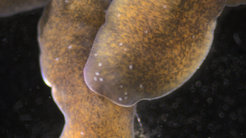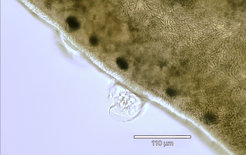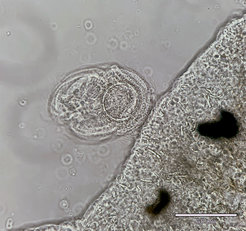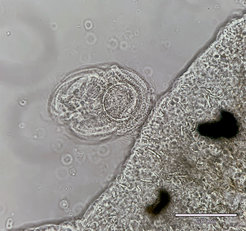Planarian hunting trip
The planarian hunt continues through Göttingen. This time the Rink Lab sampling team spread out to the Leine and Flüthe in Göttingen, in search for new planarians. Indeed, something astonishing was discovered.

Nearly all individuals of the genus Polycelis were covered by small, transparent epibionts. Further analysis showed that these animals are most probably of the species Urceolaria mitra.


U. mitra is characterized by its circular, adhesive disc which makes them perfectly adapted to living on the body surface of their host.

Most symbiotic ciliates on the surface of the planarian are not pathogenic and do not harm the individual. Earlier research also showed that these organisms have a preference for Polycelis species as hosts, which explains the U. mitra colonies on our new Polycelis collection.



